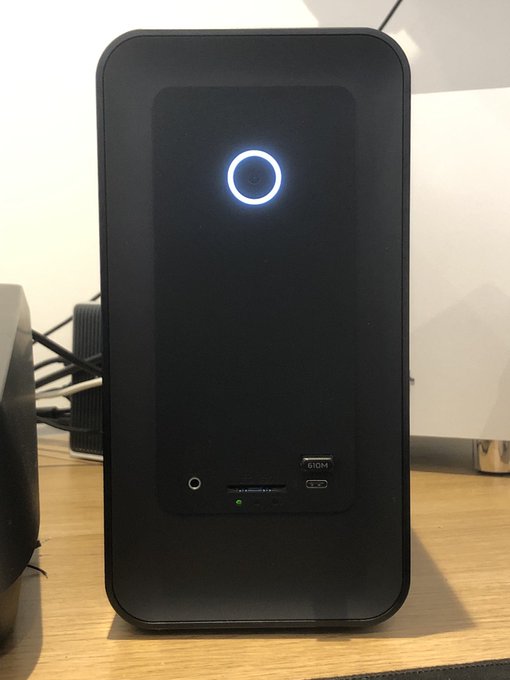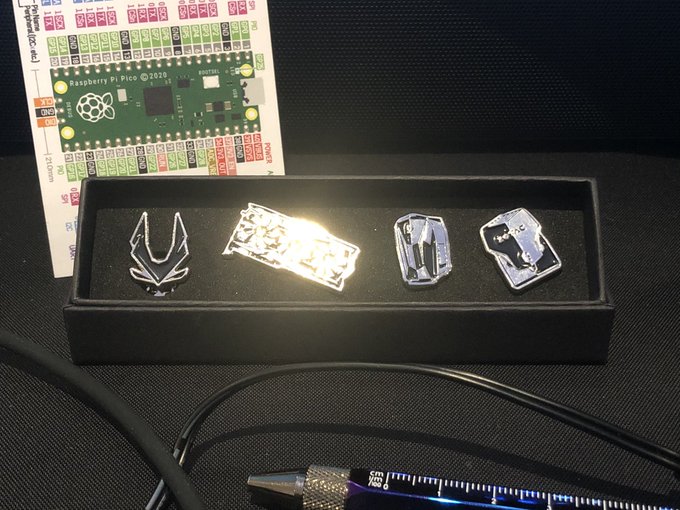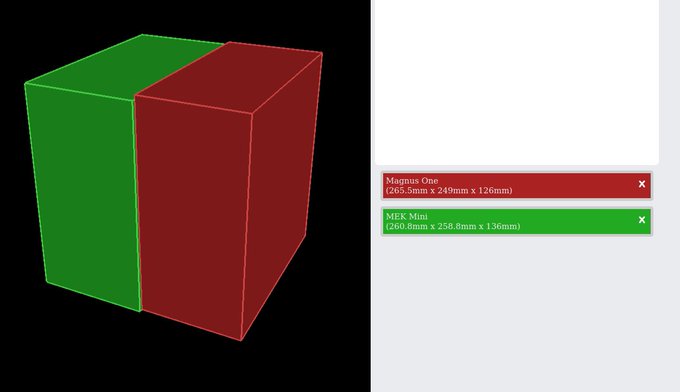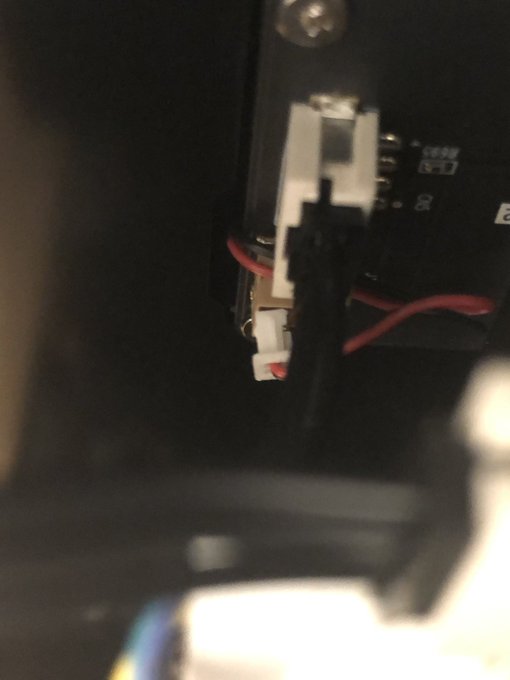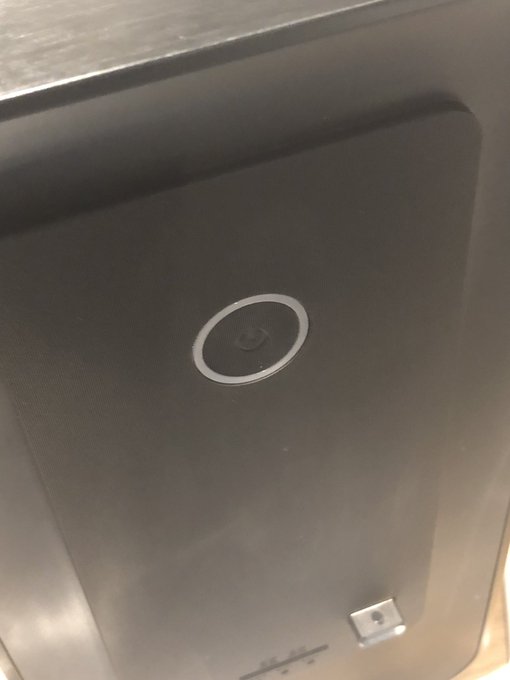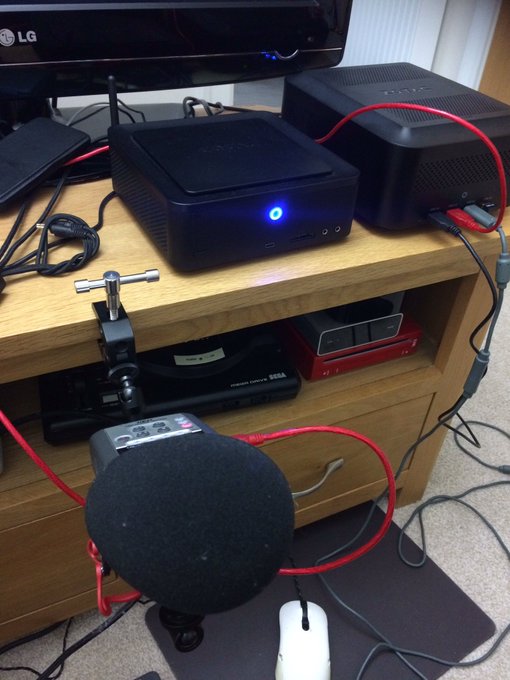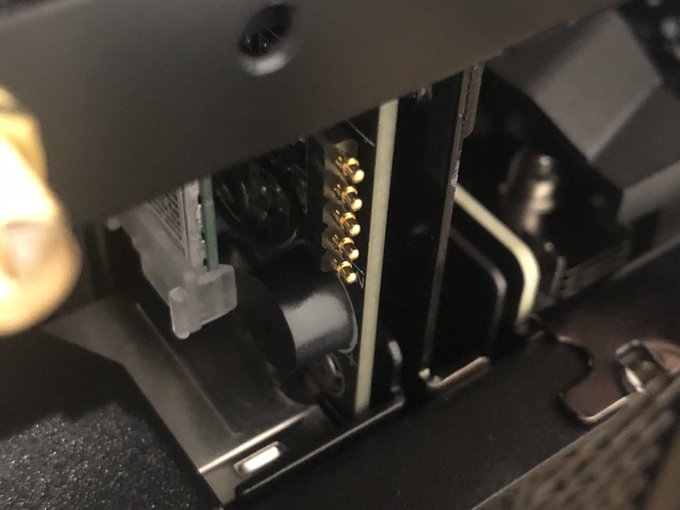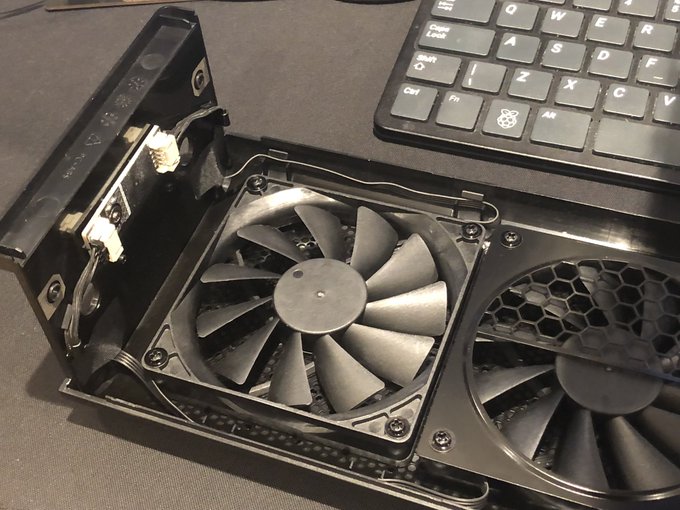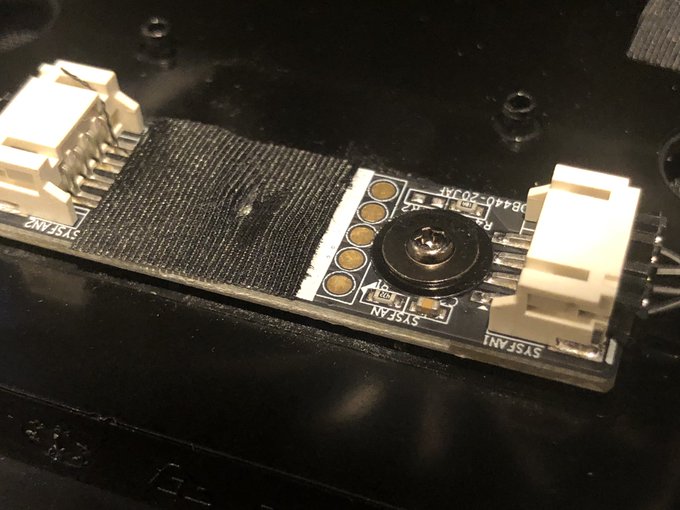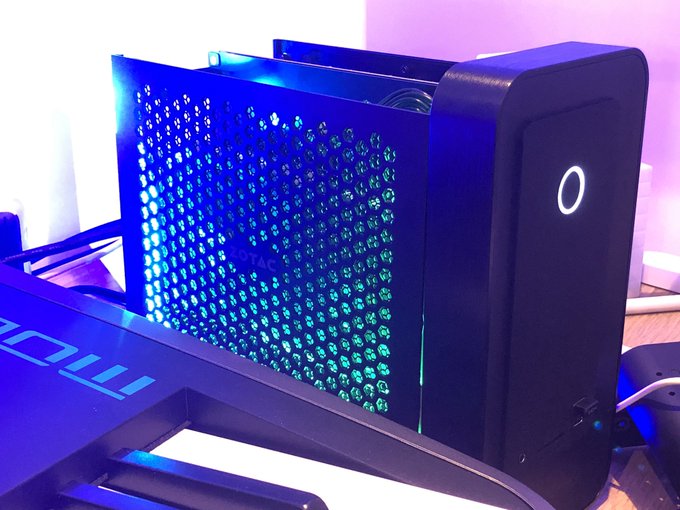Zotac Magnus One ZBOX ECM53060C RTX3060 i5-10500 Review
Zotac’s ZBOX range has run the full gamut from the smallest of the small to absurd back-mounted VR-ready rigs.
They are giants when it comes to mini PCs, but nothing in their lineup has quite captivated my attention like the Magnus One.
Perhaps it’s because the One is One of the first barebones systems to eke RTX30XX series GPUs out of some dark corner of the earth and make them available in a small(ish) form factor. Or maybe it’s because this is, perhaps, the best looking system Zotac have put together for a while.
Today the system under test is the Zotac Magnus One (ECM53060C) with a 12GB RTX3060 and an i5-10500. Other than being a cut-down version of the RTX3070/i7 Magnus One (ZBOX-ECM53060C-BE) it’s the same as its meatier predecessor in all respects save for a lower price tag. For many the 3060 and i5 should represent a solid specification for gaming- finally leaving behind the 1080p @ 60Hz days of yore and old, and starting to punch cleanly into 1440p and 4K territory depending on game and graphical fidelity. Indeed the 3060 bests the PS5 and XSX and while PC games will be less specifically optimized and tuned for this hardware, you shouldn’t sniff at it being among the least flashy of the 30XX series cards. The ability to configure up to 64GB RAM should also please those looking for a compact workstation or a dual purpose system flipping between work/play.
The clean lines and unassuming simplicity of this little beauty do not readily betray how much of a monster it is. pic.twitter.com/5kdWcQblul
— Phil Howard (@Gadgetoid) May 27, 2021
Unlike the MEK1 and MEK Mini (I can’t unhear an Australian saying Mac mini) the ZBOX Magnus One packs its power into a clean, grown-up design* which is equally at home in a gaming set up as an office. Indeed the Magnus One is a very compelling condensed workstation for video production, Blender and more- and it’s for this reason that I basically went loopy when I first laid eyes on it:
Look the @ZOTAC_UK merch is glinting … is this the secret key to Magnus one Magnus one Magnus one Magnus one Magnus one Magnus one Magnus one Magnus one Magnus one Magnus one Magnus one Magnus one Magnus one Magnus one Magnus one pic.twitter.com/cMjQMHTAhN
— Phil Howard (@Gadgetoid) April 23, 2021
* okay shut up, I like gamer aesthetics to an extent but the seemingly random angles and design informed by looking wonky over functionality just doesn’t do it for me- see my love for the Alienware Legend Design for actually understanding this.
Despite being refined, the Magnus One still very much screams Zotac. Its matte black aluminium/plastic enclosure has their signature hexagonal cut-out patterning creating ventilation on every side. It also carries their hallmark refusal to ever compromise on wantonly misaligning front ports. Seriously… Zotac’s front port placement is a kind of artistic rebellion at this point. The Magnus One has only 3.5mm audio, full-sized SD, USB Type-A and USB Type-C (USB 3.0) and yet they still manage to align them with a truly beautiful lack of any overarching consistency or structure. Genius.
On the back come a slightly more sensibly aligned bevvy of USB ports- six in total, some of which are USB 3.1 and some of which are USB 3.0* – a Gigabit Ethernet port, a 2.5 Gigabit Ethernet port, and a full-sized HDMI (1.4) port connected to the integrated UHD 630 GPU. On the RTX3060 come three full-sized DisplayPort (1.4a) connectors and one full-sized HDMI (2.1).
* and if 3.0 vs 3.1 doesn’t make you scream with confusion, the latter is TWICE as fast and thus essential for high-speed external drives but it’s extraordinarily difficult to tell which is which because there’s no colour-keying to differentiate these ports and once you plug something in the text is obscured. In an ideal world *all* of the 3.1 ports would be USB Type-C, and the 3.0 regular USB… but of course that would turn confusion into a bitter struggle for dongles because people refuse to bin their old cables and buy the right ones for new things.
That’s two more USB ports than the MEK MINI, so where’s your gaming PC god now? Indeed the Magnus One comes in at an astonishingly similar size to Zotac’s smallest gaming rig. With more ports, the 30XX series GPUs and a less frivolous design it feels like a compelling, more widely appealing successor.
RIP @ZOTAC_UK MEK MINI pic.twitter.com/zbV7nh9Ft9
— Phil Howard (@Gadgetoid) May 25, 2021
Back to spark holes- That discrete HDMI 2.1 port will happily run a 4K 60Hz TV with 10-bit HDR. I know because I spent some time utterly failing to re-acquaint myself with the traversal mechanics of Shadow of the Tomb Raider while putting the RTX3060 through its paces. If you have a fancier screen you can push that 4K up to 120Hz, but my TV – and indeed all of my displays 🙁 – top out at 60Hz.
Where IO falls short, however, is a distinct lack of Thunderbolt. There’s none. Nada. Zero. Zip. I’m so used to laptops that the omission of a Thunderbolt port feels distinctly strange to me. Are they common on desktops? Is it even strictly necessary when a device has plenty of IO and a discrete GPU internally. I’m not sure. I could think of some situations where Thunderbolt might be useful, such as chaining a single-cable, powered USB hub to gain more ports, or attaching a fast, PCIe SSD (if only I had one) but there are otherwise plenty of display connections and IO. The USB 3.1 ports – assuming you can figure out which they are in a pinch – are good for 10Gbps throughput and that should net you a peak ~1GB IO to a regular USB m.2 enclosure.
The Magnus One’s power button is picked out with a white, illuminated ring. This is a refreshing change from the curse of blue LEDs and- I’ve got to admit- was one of the things that drew me to this adorable beast. Compared to the frankly obnoxious blue ring on the MI553 it’s subtle and I haven’t left it unplugged. And you can unplug it. If you lurk in the dark and truly hate illuminated buttons, then you’ll be happy to hear that little JST connector with red/black wires on the power-button PCB is all that stands between you and sweet, sweet zero-LED freedom. It’s easy to pop out with a fingernail and disconnect the power LED altogether. This is a nice touch because, by all appearances, the LEDs are attached to the reverse of the power button PCB and could just have easily been irreversibly and directly connected.
Always appreciate being able to pop the JST for the power LED out for stealth mode, too! pic.twitter.com/rqgVQZZVaA
— Phil Howard (@Gadgetoid) May 27, 2021
For those of you now wondering why such an ardent mini PC fan as I is reviewing something as “big” as the Magnus One… well, it’s all about compromise.
Right now my workflow is spread across my old Intel NUC workstation which I reviewed back in 2017 and the Zotac MI553 from I reviewed back in 2018. Two computers and they’re still coming up short. Why? Well for starters I’m splitting between two systems because I keep running out of USB ports and needed to hook up a microphone and two USB cameras for Twitch streams and weekly office mow-mow-meetings. More glaringly is the lack of a discrete GPU in either of these systems. I tested the MI553 with Zotac’s ostensibly not-for-GPUs AMP Box Mini Thunderbolt 3 enclosure and while this fixed the lack of USB ports to an extent and totally fixed the lack of GPU, the resulting setup was a laughably absurd spaghetti cable nightmare that ate desk space for breakfast.
External GPU being larger than the PC is lulzy but dang this thing is quiet! Really want an eGPU for my laptop now 🙁 @ZOTAC_UK pic.twitter.com/OdIR7KlRMe
— Phil Howard (@Gadgetoid) June 2, 2018
Since mini PCs seem to stubbornly refuse to avail themselves of laptop GPUs, precious few truly mini PCs support full-sized (or there abouts) GPUs, and Dell’s Alienware Alpha experiment is just a footnote in history the Magnus One represents a godly fingertip extending from the heavens and teasing the kind of computer I’ve really been looking for all these years. “Mini. But mighty.” Don’t ask me where I stole that phrase from… I thought it was Apple but Google disagrees.
The full-sized RTX3060 in the Magnus One afford it the kind of graphical oomph that fit-in-your-palm mini PCs and Intel Celeron-based slouches can only dream of. Not only this, but it offers that faint glimmer of hope that in some distance future where it’s possible to obtain GPUs for prices that don’t warrant selling body parts you might one day be able to upgrade it.
And… the Magnus One is hella easy to open, too. Remove the twin WiFi antenna (sensibly placed right at the top and away from any ports for a change), unscrew the rubberized thumb screws, and push the bit that says push. Voila. The top of the Magnus One – fans and all – slides effortlessly away allowing you to remove the side panels for complete system access. “But what about unplugging the fans?” I hear you ask? Thing of the past. I say. An elegant interface of five copper pads and five pogo pins makes for a zero-force connection between mainboard and fan controller.
Look at this cute little Pogo pin interface for the fan-equipped top shell of the @ZOTAC_UK Magnus One. Very nice touch! You can whip off the top of the unit without wrestling wires. pic.twitter.com/iqd0IXV9vQ
— Phil Howard (@Gadgetoid) May 27, 2021
The side panels then lift out revealing easy access to the GPU and CPU, plus the two M.2 slots, 2.5″ SATA bay and two SODIMM DDR4 RAM slots good for up to a whopping 64GB RAM. Take *that* MS Flight Simulator.
There’s a third slot dedicated to the Killer wireless card, and while those who want to use only Ethernet might dream of using this slot for a third speedy SSD there’s as nag- it butts right up against the USB ports in the top of the system and will – in practice – only fit a 2230 card at best. You’ll also quickly realise it’s a Mini-PCI E-keyed slot accepting only WiFi modules. Dreams dashed, you must rely on the SATA bay for “archival media” storage. This raises a pretty big concern with the Magnus One as a creative computer- lack of space for internal storage and lack of a Thunderbolt 3/4 port on the rear for high speed external drive bays might be a showstopper. That said, the 2.5Gbps Ethernet port might provide a saving grace to communicate with a speed NAS for true archival storage, but your fast, immediate drives will be limited to the two PCIe M.2 slots. Better grab some biggies!
The wireless card speaks WiFi 6, but, sheesh, WiFi sucks no matter what you do with it so I highly recommend leaving the aerials in the box and sticking an Ethernet cable into this sucker. The system also has Bluetooth 5 and it was, of course, easy to pair an 8bitdo n30 Pro controller to fail hard at Tomb Raider.
I installed Windows 10 on the supplied 512GB SSD (not typical of a Magnus One barebones system, albeit you *can* get ones with Windows 10 preinstalled) and fit an additional 512GB SSD for Pop!_OS. With both operating systems set up totally separately as the only drive in the system (I’m paranoid, OK!) they were completely unaware of each other, but could be easily selected at boot by hitting F8 and picking either Pop!_OS or Windows Boot Manager. I frikkin’ love modern BIOSeseses.
GPU support in Pop!_OS’s NVIDIA version worked out of the box, and you *really* do need to make sure you download “pop-os_20.10_amd64_nvidia_15.iso” or the version of your choice specifically for NVIDIA GPUs if you want it to work. A prior attempt with the stock Pop!_OS resulted in little more than a black screen and a *very large* blinking cursor.
Can I make it glow?
Yes, albeit the only easily accessible source of power in the Magnus One is the spare 8-pin GPU connector that will grant you 12v for your lighting pleasure. There are- sadly no USB headers on the mainboard and nothing else you might use to power LEDs. Undefeated I decided to awkwardly route the TP-Link KL430 LED strip I had handy into the enclosure, it was just possible to squeeze the power cable between the top lid and the back plate. A little modification and I could have mounted the whole thing internally and powered it from the 12v connector, but who’s got the time for that?
More than enough room for an LED controller and LED strips to run along the bottom, rear and front edges too ?@ZOTAC_UK want me to illuminate this sucker? ? pic.twitter.com/ytcSGpcB6j
— Phil Howard (@Gadgetoid) May 27, 2021
Of course once I’d proven the LEDs would fit and look pretty good, I had to go the distance:
But can your PC do this? @ZOTAC_UK Magnus One illuminated by a @TPLINKUK KL430 smart LED strip! pic.twitter.com/TIxw7xSaQh
— Phil Howard (@Gadgetoid) May 27, 2021
The Magnus One looks shockingly good with its clean lines contrasted by LED illumination… maybe they need an RGB version after all!
In Conclusion
A barebones Magnus One configured with an RTX3070 and an i7 10700 – at time of writing – will set you back a whopping £1559.99. You can expect to spend about £2000 to configure that with RAM and storage that does it at least *some* justice. If you’re on a budget, buying a single 32GB DDR4 SODIMM module and single SSD is a good start since you can upgrade later to double your storage and RAM (I tend to put games on a secondary SSD and OS on my primary).
The RTX3060 and i5 10500 tested is slated for around £1250 – though I’ve found it leaked on a couple of dubious websites for closer to £1130 – and you can expect a top-notch ready-to-play configuration at around £1700. None of these prices include the operating system, however, and – if you want to be above board – a Windows 10 Pro OS license will set you back £120 OEM… don’t even think about buying that from Microsoft. You might pinch pennies from less reputable sources, but I ain’t touching those to find out.
As configured, with a single DDR4 SODIMM and SSD, the RTX3060 system can squeeze in at around £1400 – £1500 and is a bulletproof machine for gaming, video editing or Blending fresh out of the gate, even if the part choices might be a little… uninspiring. I’d notch up to a 1Tb SSD, but unless you’ve got a particularly intensive professional workload that single-channel, lonely 16GB module is going to be *fine*. You can always buy fancy RAM and hoooge SSDs later once your wallet recovers.
Would I buy one of these? Absolutely. In a hypothetical world where I have money to burn and don’t already have good-enough workstations at my disposal I would be thrilled to have a Magnus One as my primary rig. I recognize that mini systems are a compromise over larger, more upgradable enclosures but small is a key requirement for something to feel at home in my setup. If you’re looking for peak upgradability (and tons of internal storage) over something the size of a games console then this is definitely not you. You can’t – for example – fit a PCIe HDMI capture card either internally or externally so you’d have to rely on USB for video capture (and also for ingress). If you share my love of small form-factor and want to create a clean, minimal professional workstation within your home… you’re going to love Magnus One.
If you’re fancy you can buy the RTX3070 i7 Magnus One from Scan right now. In the meantime you can get more details on the ECM53060 RTX3060 variant from Zotac.com.
